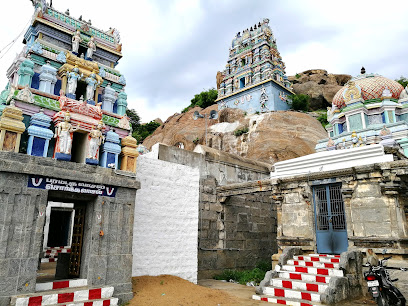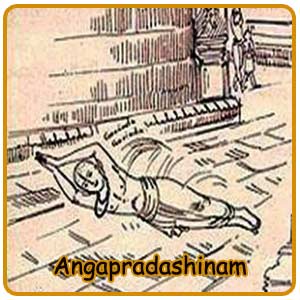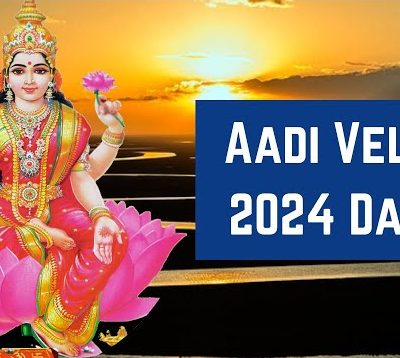Singavaram Ranganatha Perumal Temple, Villupuram

Address
Singavaram Ranganatha Perumal Temple, Villupuram
Singavaram, Gingee Taluk,
Villupuram District – 604 202
Mobile: +91 94432 85923 / 99524 49661
Moolavar
Ranganatha Perumal
Amman
Ranganayaki Thayar.
Introduction
Ranganatha Perumal Temple is dedicated to Lord Vishnu, located in Singavaram Village near Gingee Town in Gingee Taluk in Villupuram District of Tamil Nadu, India. Presiding Deity is called as Ranganatha Perumal and Mother is called as Ranganayaki Thayar. This Cave temple is situated on a hill top with around 160 steps. This temple is facing towards east with three tiered Rajagopuram. It is a good specimen of Pallava rock cut shrine.
Puranic Significance
Singavaram:
Hiranyakasipu and Hiranyaksha are Vishnu’s gatekeepers Jaya and Vijaya, born on earth as the result of a curse from the Four Kumaras. In Satya Yuga, Hiranyakasipu and Hiranyaksha (together called the Hiranyas) were born to Diti, daughter of Daksha Prajapathi and sage Kashyapa. It is said that asuras were born to them as a result of their union at the time of dusk, which was said to be an inauspicious time for such a deed. Hiranyakashipu’s elder brother, Hiranyaksha was slain by Varaha avatar of Lord Vishnu. Angered by this, Hiranyakasipu decided to gain magical powers by performing a penance for Lord Brahma. He went to the Himalayas and began to perform severe penance for many years. Lord Brahma was pleased by his penance and asked him for a boon. He asked for a boon that would make him as good as immortal. He asked that let death do not come to me either by man or beast, nor devil, nor god shall cause my death by day or by night with steel or stone or wood, indoors or outdoors, or earth or in sky. Lord Brahma granted him the boon. Hiranyakasipu become so mighty and started his reign of terror. Whilst Hiranyakasipu is performing the penance, Indra and the other devas attack his home, seizing the opportunity in his absence. At this point the divine sage Narada intervenes to protect Hiranyakashipu’s wife Kayadhu, whom he describes as sinless. Narada takes Kayadhu into his care, and while she is under his guidance, her unborn child (Hiranyakashipu’s son) Prahlada becomes affected by the transcendental instructions of the sage even in the womb.
Later, growing as a child, Prahlada begins to show symptoms of Narada s prenatal training and gradually becomes recognized as a devoted follower of Vishnu, much to his father’s disappointment. Hiranyakasipu eventually becomes so angry and upset at his son’s devotion to Vishnu (whom he sees as his mortal enemy) that he decides he must kill him but each time he attempts to kill the boy, Prahlada is protected by Vishnu’s mystical power. When asked, Prahlada refuses to acknowledge his father as the supreme Lord of the universe and claims that Vishnu is all-pervading and omnipresent. To which Hiranyakasipu points to a nearby pillar and asks if Lord Vishnu is in it. Prahlada nodded his head saying Lord Vishnu is present there. Hiranyakasipu, unable to control his anger, smashes the pillar with his mace. A tumultuous sound is heard, and Lord Vishnu in the form of Narasimha appears from the broken pillar and moves to attack Hiranyakasipu in defense of Prahlada. Lord Vishnu has chosen here to appear in the form of Narasimha in order to be able to kill Hiranyakasipu without violating the boon given by Brahma. Hiranyakasipu cannot be killed by human, deva or animal, but Narasimha is none of these, as he is a form of Vishnu (a deva) incarnate as part human, part animal. He comes upon Hiranyakasipu at twilight (when it is neither day nor night) on the threshold of a courtyard (neither indoors nor out) and puts the demon on his thighs (neither earth nor space). Using his nails as weapons, he disembowels and kills the demon. Even after Hiranyakashipu’s death, none of the gods and demigods present is able to calm Narasimha’s fury. So, all the gods and goddesses call his consort, the goddess Lakshmi, but she is also unable to do so. Then, at the request of Brahma, Prahlada is presented to Narasimha, who is finally calmed by the prayers of his devotee. Lord Narasimha then made Prahlada the King and instructed him to follow good conduct and do his duties. Saying those words Lord Narsimha disappeared. Thus, the idol of Prahlada can be seen in the sanctum. Because of the incident, the place came to be called as Singavaram.
Singavaram could be the ancient Simhapura, the capital of Simhapuranadu. This cave temple is believed to be built by Mahendravarman I (600-630CE) based on its architectural style. Singavaram Hill is said to have been originally a centre of Jainism. Several Jain rock cuts and sculptures can be found around Singavaram. An inscription of Kopperunjinga (a Kadava chieftain) in the Singavaram temple mentions the deity is Thiruppanrikkunru Emperuman possibly meaning a shrine intended for Varaha Perumal. Lord Ranganatha is said to have been the tutelary Lord of Gingee and the personal deity of Raja Desingu. There is an interesting connection between the Ranganatha Swamy Temple in Singavaram, when the temple town of Srirangam was attacked by Ulugh Khan’s army in 1323 AD., the Utsava idol of Srirangam, Azhagiyamanavalan or Namperumal was taken out of this temple for safety to various places in South India. Gopanna, a Vijayanagara official who had his residence in Gingee went to Tirumala where the images of Azhagiyamanavalan and consorts were worshipped and took them to Singapuram (Singavaram) where they were worshipped. He subsequently brought the images to Srirangam where they were reinstated in 1371 AD
Beliefs
Those completing 60, 70 and 80 years are advised to celebrate their birth days in this temple. Devotees offer Thirumanjanam and Vastras to Perumal.
Special Features
The temple is situated on a hill top with around 160 steps. This temple is facing towards east with three tiered Rajagopuram. It is a good specimen of Pallava rock cut shrine. There is a four pillared mandapam called as Oonjal Mandapam at the foot hills exactly where the steps lead to the hill temple. Carvings of conch, discus, namam, the feet of Lord Ranganatha and five forms of Lord Hanuman can be seen on the rocks at the starting of the steps.
Lakshmi Theertham can be found on the way to Hill temple. There is a mandapa, situated in front of the rock cut cave shrine. Dhwaja Sthambam, Bali Peedam and Deepa Sthambam can be found facing the sanctum. The Sanctum Sanctorum (Cave Shrine) consists of Mukha Mandapam, Ardha Mandapam and Sanctum. The Ardha Mandapam consists of two rows of pillars and pilasters.
The pillars are carved with lotus medallion. Pallava era dvarapalas can be seen guarding the sanctum. There is a niche showing Durga, on the left side of Dvarapala. Durga is depicted with 4 hands holding the Shankha, Chakra, and two arms resting on her thigh and waist, stands on the head of Mahishasura. Presiding Deity is called as Ranganatha Perumal and is facing east.
The idol of Lord Ranganatha, in a reclining posture, measures 24 feet. The idol is seen in reclining pose on the coils of the serpent, whose five hoods are shown above the head of Lord Vishnu to provide shade to Lord Vishnu. Vishnu’s left hand is in Kataka mudra while the right hand is patting the coil of Sesha.
The Idol is carved from living rock and covers almost the whole wall. A panel in the rear wall of the sanctum depicts the Gandharvas (celestial beings known for their music skill), Brahma, seated on a lotus, emanates from the navel of Lord Vishnu, Mahalakshmi can be seen on his chest, Garuda and Madhu & Kaitabha who were killed by Lord Vishnu.
Goddess Bhoodevi, the consort of Lord Vishnu can be seen near the feet of Lord Vishnu and Prahlada can be seen near his knee. His feet face towards north, the direction of Kubera, the Lord of wealth. Those worshipping Lord Vishnu in this form will never have to face poverty in their lives. The Idol is said to be bigger than the idol in Srirangam.
Like Thiruvananthapuram Ananthapadmanatha Swamy, the head, chest and leg portions of Ranganatha Perumal have to be worshipped through 3 separate entrances. The festive idol of Lord Vishnu can be seen with his consorts Sridevi and Bhoodevi. Mother is called as Ranganayaki Thayar. She is housed in an east facing shrine. Her shrine is situated in a level below the sanctum on the south side.
There are shrines for Varadaraja, Chakrathazhwar, Anjaneya, Garuda (made of Navapashana), Ramanuja and Desikar can be seen in the temple premises. Sculptures of Jain Thirthankaras can be found around the temple. It is said that the Rajagiri Fort, Gingee is linked by underground tunnels to this temple. The tunnel is said to be used by Raja Desingu and his queen to visit the temple unobserved.
Festivals
Utsava Idol of Ranganatha moves to Puducherry beach to grace the devotees on Masi Magam day (February-March). Special pujas are performed on Vaikunda Ekadasi day in DecemberJanuary.
This has been extracted from,
https://tamilnadu-favtourism.blogspot.com/2016/01/sri-ranganathesvara-temple-singavaram.html













Century/Period
Mahendravarman I (600-630CE)
Managed By
Hindu Religious & Charitable Endowments Department (HR&CE)
Nearest Bus Station
Melachery, Gingee
Nearest Railway Station
Thindivanam, Malaiyanur
Nearest Airport
Chennai









